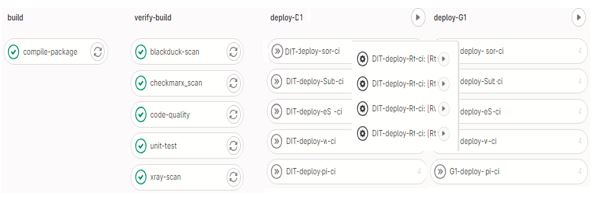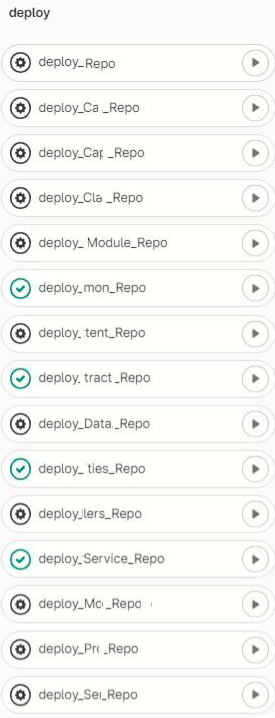How To Use GitLab for Simultaneous Execution of Jobs (Part 1)
In part one of this series, the reader will be introduced to the basics of GitLab, as well as continuous integration and continuous deployment/delivery.
Join the DZone community and get the full member experience.
Join For FreeLet us talk about GitLab.
The web-based DevOps platform GitLab offers an entire suite of tools for software development, version control, continuous integration, delivery (CI/CD), and communication. Based on Git, the well-known distributed version control system, provides a centralized repository management solution.
GitLab enables teams to efficiently manage their software development projects, track changes, and communicate on code. It offers tools for project management as well as capabilities like code repositories, problem tracking, code reviews, continuous integration, and deployment.
Key Features of GitLab
- GitLab's version control system, which leverages Git as its foundation, enables developers to efficiently track changes, make branches, and manage merges.
- GitLab offers a centralized repository management system that enables programmers to effectively store, arrange, and manage their codebase.
- Issue Tracking: Using GitLab's built-in issue-tracking system, teams can create and track issues, assign them to team members, and track their progress.
- GitLab provides a powerful CI/CD pipeline that automates the build, test, and deployment procedures. It lets teams instantly merge code changes, perform automated tests, and deploy apps.
- Collaboration tools such as code reviews, commenting, and inline conversations make it easier for team members to cooperate and provide input on code changes.
- GitLab features project management tools such as milestones, boards, Kanban, and Agile boards, allowing teams to successfully plan and track their project progress.
- Security and Access Control: To ensure code integrity and guard against potential security concerns, GitLab offers several security capabilities, such as role-based access control, merge request approvals, and vulnerability management.

Figure 1 GitLab CICD- Pipeline Architecture
GitLab comes in a variety of editions, from a free community edition to a premium version with more functionality and support choices. It can be utilized as a cloud-based service through GitLab.com or self-hosted on-premises.
GitLab Continuous Integration and Continuous Delivery (CI/CD)
GitLab CI/CD is a robust continuous integration and continuous delivery platform offered by GitLab, a web-based Git repository management tool. Teams may automate every step of the software development lifecycle with GitLab CI/CD, from code commit to deployment, by using a set of pipelines.
An overview of the GitLab CI/CD process is provided below:
- GitLab Configuration: Before you begin, you must have a GitLab repository set up and set up. You can either set up your own self-hosted instance of GitLab or use the cloud-hosted version.
- .gitlab-ci.yml: The brains underlying GitLab CI/CD are included in the .gitlab-ci.yml file. This file, which describes the CI/CD pipeline, may be found at the root of your project's repository. It is made up of several steps, tasks, and instructions that define how your code should be created, examined, and released. The language used to write it is YAML.
- Pipelines: In GitLab CI/CD, a pipeline is a collection of stages and jobs that specify the actions to be taken for a certain branch or tag in your repository. You may automate the testing and deployment processes by having each pipeline start when a new commit or merge request occurs.
- Jobs and Stages: Stages reflect the pipeline steps, including build, test, and deploy. You specify one or more jobs—individual units of work — within each level. Jobs can operate on separate runners (such as virtual machines, containers, or Kubernetes pods), either concurrently or sequentially.
- Runners: GitLab CI/CD employs runners to conduct the tasks listed in your pipeline. GitLab offers both shared runners and customized runners that you may build up on your own infrastructure. Your builds and tests will always run because GitLab Runners watch for new jobs and run them in secure, isolated environments.
- Job Artifacts and Reports: GitLab CI/CD enables you to save artifacts produced within the pipeline, such as code coverage results, test reports, or built binaries. You can download these artifacts and use them for deployment or additional investigation.
- Integrations and Deployment: GitLab CI/CD provides numerous integrations to deploy your code to various environments, including Kubernetes clusters, cloud infrastructure like Azure or AWS or Google Cloud, or even custom servers. We have the option of creating your own deployment scripts or using GitLab's predefined deployment templates.
- Monitoring and Feedback: GitLab CI/CD gives you access to information about the status and development of your pipelines via the GitLab user interface. We can check logs, keep track of how each job is running, and get notifications when a pipeline run succeeds or fails.
GitLab CI/CD includes a variety of capabilities, such as caching, environment variables, secret management, and more, so you may tailor and improve your CI/CD workflows to suit your requirements.
Overall, GitLab CI/CD streamlines the process of creating, testing, and deploying software, allowing teams to create high-quality applications more quickly and efficiently.
GitLab CI: Parallel Processing
For a developer, there are few things more annoying than having to wait a long time for everything to finish after pushing new code. This manual demonstrates step-by-step how parallel processing can significantly shorten deployment times.
A great approach to decrease deployment times and give your development and quality assurance teams faster feedback is to run your automated deployments in parallel as part of our Gitlab CICD pipeline. Running your deployment in parallel cuts down on wait times and makes it possible to send bug fixes and upgrades to production more quickly without sacrificing the number of tests you run.

Figure 2 GitLab Simultaneous Execution of Jobs
Executing parallel deployment automation with GitLab CICD is quite simple, but there are a few setup parameters you need to be aware of. We will go over every step in setting up parallel execution to quicken deployments in this tutorial and how to communicate the outcomes to the SRE team. So, let us get going!

Figure 3 GitLab - Parallel Deployments with Regions
GitLab Parallel Deployments Workflow
To enhance execution times, we must execute numerous deployment jobs concurrently. In each deployment job instance, we must then perform certain instructions, such as creating various sections of a site, integrating web servers, and making configuration updates.
We have more than XX jobs in the pipelines we utilize to build and deploy our GitLab application. Not all those positions are created equal. Some are quick operations that just take a few seconds to complete, while others are lengthy processes that must be carefully optimized. The changes made by team members and contributors from the larger community are represented by each of these pipelines. To ensure that the update functions as intended and is integrated with the rest of the product, all application/project contributors must wait for the pipelines to complete. To keep our teams' productivity high, we want our pipelines to be completed as quickly as feasible.
As a result, we continually check the length of our pipelines. For instance, successful series of pipelines took 53.8 minutes approx. to complete in the previous release.
Assuming we execute 100 to 200 approx. pipelines every day, we want to investigate whether we can optimize our process to alter how long-running jobs run.

Figure 4 GitLab - Sequential Execution of jobs
In this part, you explored sequentially execution of jobs. In the second part of this series, you will learn how we solved bottleneck jobs by running them in parallel.
Opinions expressed by DZone contributors are their own.

Comments